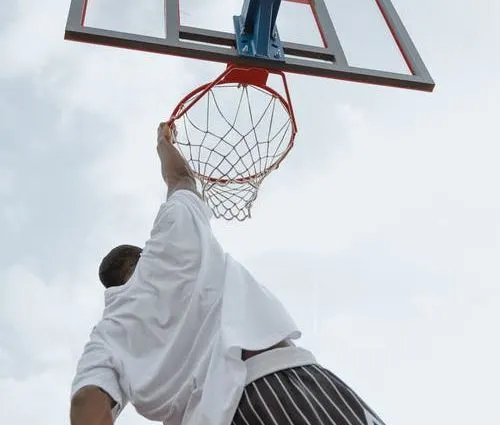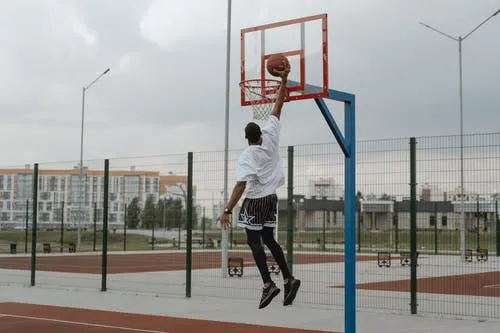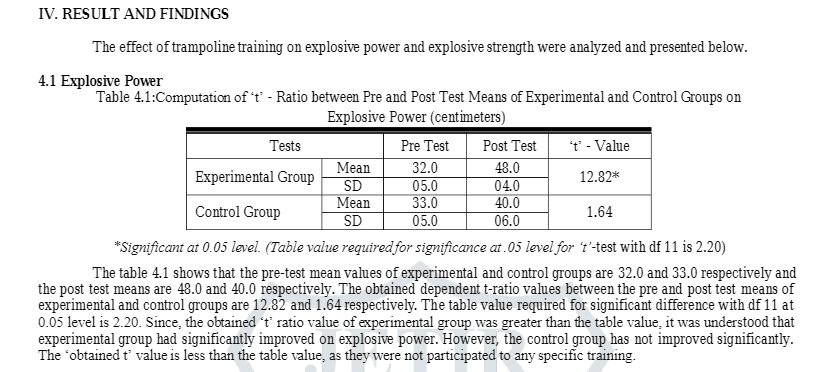Jumping on a trampoline is known as a fun kids’ activity, usually involving friends and a giant trampoline. Kids will jump for hours on it, seeing who can jump the highest while attempting all types of tricks like front and backflips. Trampolines are also used for exercising which is a great way for those that have issues with joint pain to be active. Often times many people wonder if there are any benefits in improving athletic performance with the trampoline such as increasing one’s vertical jump.
Can you increase your vertical jump using a trampoline? Surprisingly you can, there are research studies that suggest that jumping on a trampoline regularly strengthens the muscles in the lower legs and trunk that are responsible for jumping.
Many athletes in fact attribute their high jumping ability due to the trampoline they use to frequently jump on when they were younger. It does have a very different effect on the body when jumping for a few minutes on a trampoline when compared to jumping on the ground. You may feel you can’t jump as high from the hard surface after jumping on a trampoline.
Many basketball players wish they could get another 6 to 12 inches on their vertical leap, in doing so they feel they could drastically improve their game and play at the next level. Can you increase your vertical jump by 6 to 12 inches using a trampoline? Let’s see what the research says.
If you are thinking about buying a basketball jersey or shoes, check out the offers below from these retailers.
| Retailer | Promo Code | Promotion | Link to Retailer |
 | DROP | 70% OFF | Go to Fanatics |
 | PARSCR20 | 20% OFF | Go to Eastbay |
 | N/A | N/A | Go to Amazon |

Can Jumping on a Trampoline Help Your Vertical Jump? What the Science Says
Trampolines can work to improve lower body explosive power, one study published on research gate showed 24 participants split up into two groups of 12, one control group and the other engaged in a 6-week trampoline program that consisted of 3 days a week for 45 minutes to an hour.
At the end do the 6 weeks, tests in the Vertical Jump showed an average of a 12 cm increase in the vertical jump. Not bad for jumping around having fun on a trampoline. That’s almost 4 inches. (Click the image to take you to the entire study.)
Although the study does not take into consideration the experience of the athlete’s ability to jump well or poorly in the vertical jump.
Like many tools and exercises, it can be argued that those that score poorly in the vertical jump will have much more room for improvement than those who are more advanced in their jumping ability.
If one athlete had a poor vertical jump, they could do pretty much anything to increase it and will see beginner gains.
While an advanced athlete may not see the gains a novice athlete sees, infact they may see minimal gains.
But the studies do show the trampoline jumping improves balance and coordination.
Although the jumping on a trampoline is not the same as jumping on the ground as you are in contact with the trampoline spring surface much longer than that of a jump on the hard surface. infact the least amount of time on the hard surface when generating the power to jump the better the vertical jump will be expressed.
Many people often think that trampolines are just fun jumping platforms for the kids to jump on as it wouldn’t benefit adults because it’s easy.
With little to no work you just start jumping and allows the trampoline to spring you up and down. This is further from the truth and it can provide a very good workout, more on that later…
Not only is this a good tool for keeping active but it saves your joints in the process, you can get a different kind of jumping workout than you are used to while increasing your vertical.
But like anything doesn’t expect monster gains of 8 to 12 inches in a few weeks. Increases in vertical jump height can take time and patience, a lot of it.
If you are wondering if jumping on a trampoline alone will help your vertical jump, the answer isn’t that simple.
A combination of trampoline jumping and practicing jumping on the surface of the ground could help with an increase in vertical but don’t expect miracle gains.
Jumping on the trampoline does appear to mirror that of a jump but does not mimic the same muscles involved in a vertical jump when done on the concrete or floor.
You also have to understand the body adapts to stresses placed on it and it’s possible for the participants in the above study, had they continued they may have seen much fewer gains in the coming weeks had they carried on with the workouts.

Jumping on a Trampoline compared to running and jumping?
Another study done by NASA in the 1970s found that jumping on a trampoline was comparable to running 6 miles per hour, biking for 14 miles per hour, and playing football or basketball.
Also called rebounding workouts you can see how beneficial it is. Keep in mind there are no studies that suggest if you should use the trampoline for long periods of time, practice plyometric jumps on them or jump with a max effort to stimulate the fast-twitch muscle fibers.
Other Benefits to using a trampoline
Here are some other benefits to consider:
- Lose weight
- Improves Balance
- Improves Posture
- Improves Cardiovascular Fitness
- Improves Power and Explosiveness
- Works on the major muscle groups involved in jumping.
- Strengthens Core Muscles.
- Strengthens Bones
- Easy on Joints
- Makes it Fun to Exercise
Types of Trampolines
There are a couple of different size trampolines on the market. There really are only small and large trampolines.
The small trampoline is used for working out and for one child to jump on. Some trampolines have a handlebar connected to the trampoline where you can hold on for better balance to prevent yourself from falling.
The dimensions of the trampoline can be anywhere from 2 to 5 feet in length and a foot or less off the ground. It can be easily used indoors in the comfort of your own living room. These trampolines can range from $40 dollars and up.
The large trampoline is the one you see in backyards where kids jump with their friends, usually placed in the backyard, it is an above-ground trampoline but some people install them in the ground.
It also has fenced netting to protect anyone jumping on the trampoline from falling out or off the edge and injuring themselves.
The size of these trampolines is anywhere from 10 to 12 feet and 3 to 4 feet off the ground, usually needing assistance to get into the trampoline with a ladder. These trampolines can cost anywhere from $500 and up.
Injuries on a Trampoline (Statistics)
The risk of injury is greater on a large trampoline, especially if you are jumping with more than one person at a time.
This can further cause a child to land awkwardly on the trampoline, which can result in broken bones and fractures.
Trampolines cause about 100,000 injuries every year. While those that were 16 years or younger, 93 percent of this age group suffered a fracture, were trampoline-related.
14 percent of injuries happen to children younger than 6, while one in 200 injuries result in some form of brain damage. T
o read more on injuries involving trampoline, you can click here for this article called 7 TERRIFYING STATISTICS ABOUT TRAMPOLINE SAFETY.

What’s important? Vertical Leap or Your Game
Improving your vertical jump at any level will help improve your basketball game, but I often feel that the time you spend to do so would be better spent working on skill development than trying to gain some inches on your vertical jump, and here’s why.
There is no cookie-cutter program to improving your vertical jump, I don’t care what anyone says if this were the case then there would only be the need for one vertical jump program on the market and all others wouldn’t be able to compete.
Vertical jump programs come and go because new research and studies confirm better principles to increasing your vertical leap.
Increasing your vertical jump can be complicated if you have no idea what you are doing.
Expect a slow process one inch a month if you are using a good equipt program with Plyometrics and weight lifting that is tailored to you.
Oh here’s the kicker, you can forget to play basketball every day because you need to allow your body to rest while allowing the body to grow.
Rest is just as important as the workout, if not more important.
So now let me ask you a question? Is it better to get a few inches over the next couple of months? Will it make that much of a difference in your overall game? What happens if you don’t gain a single inch?
This has happened to me. I use to take 6 months off at a time to try and increase my vertical with vigorous workouts that I didn’t want to ruin my hard-fought gains playing basketball every day.
So I cut down basketball altogether. In the end, it was pointless and I lost time I could have spent working on my game.
I ended up quitting the programs while stopped working out and losing all the gains once I started to play basketball a lot.
You do want to maintain a good balance of weights and plyometrics while playing basketball. Focus on improving your overall game and if the vertical gains happen in the process then great.
If you are not one to play at the next level and want to just dunk then, by all means, go all out and get a lot of rest in the process.
If you want to make it to the next level, focus on working out and improving your overall game not just your vertical leap.



